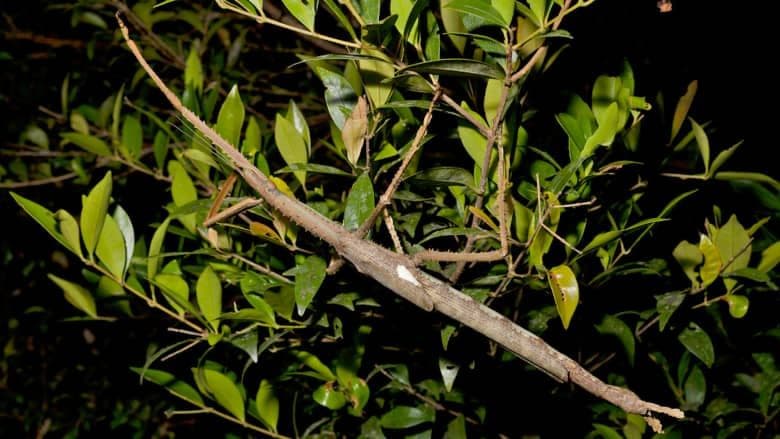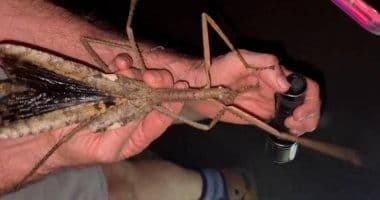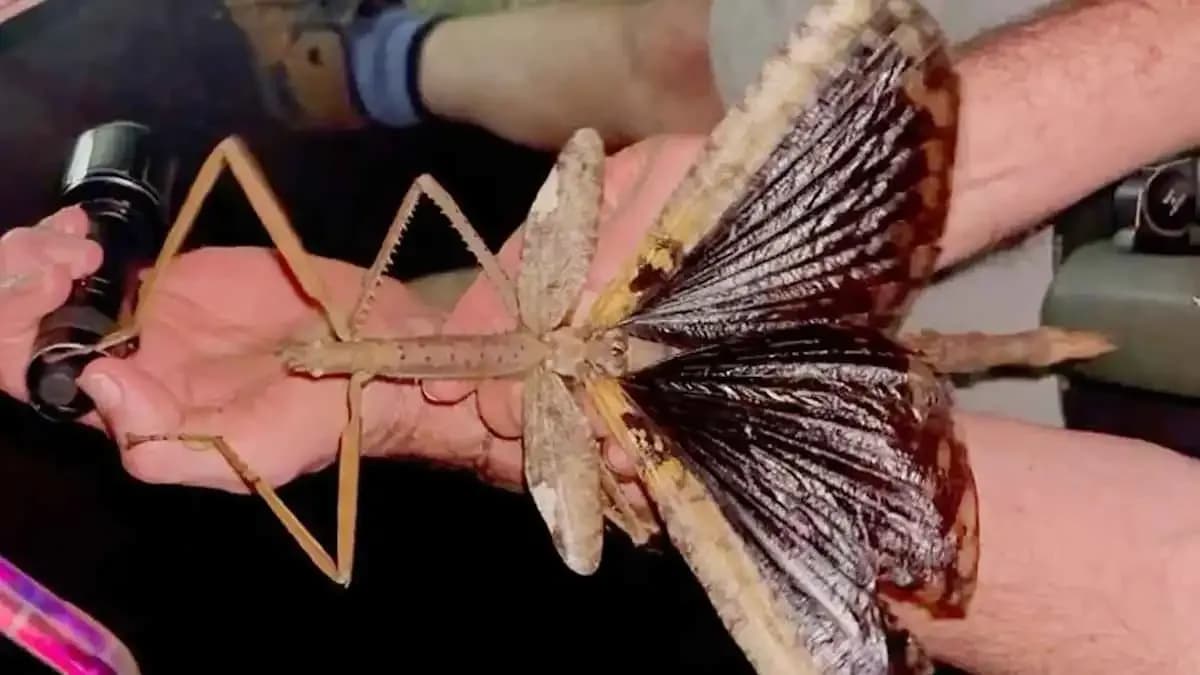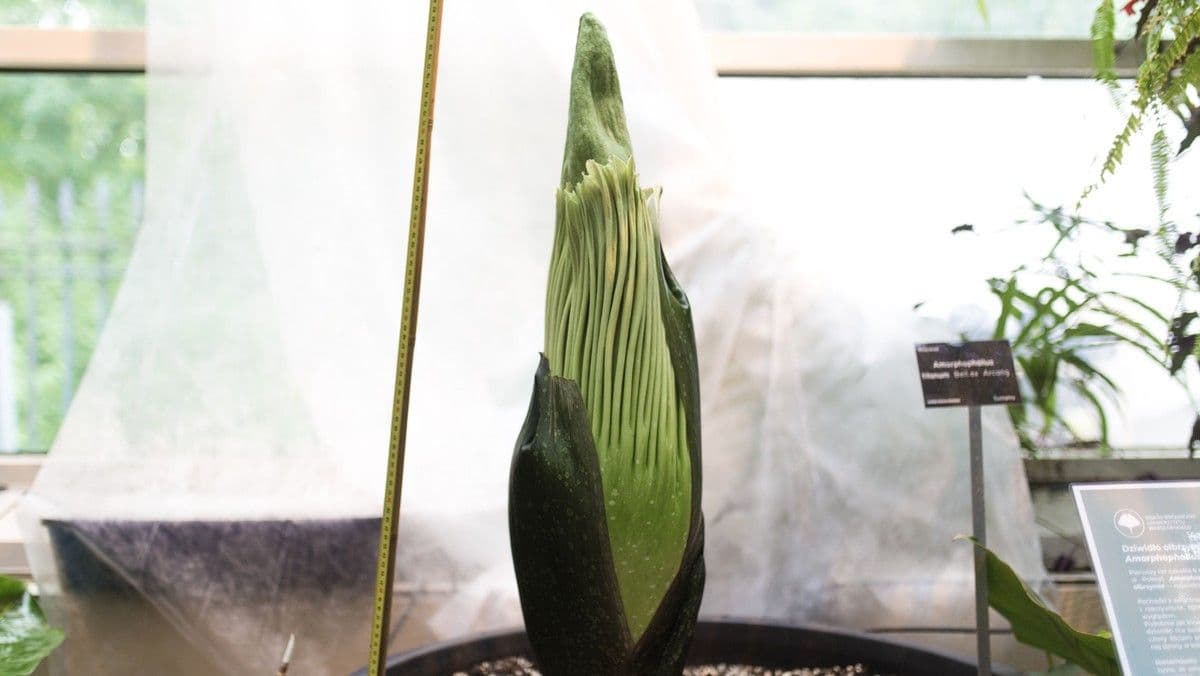Beyond the Visible: The Giant Stick Insect's Revelation from Australia's Untamed Canopy
Beyond its size, Australia's newly found giant stick insect Acrophylla alta unveils the planet's vast, hidden biodiversity. A call to explore Earth's secrets.

The Unseen Giants
Deep within the remote, emerald canopies of northeastern , a truly remarkable scientific discovery has unfurled, reminding us just how much of our planet's biodiversity remains a mystery. Researchers recently unearthed a colossal stick insect, aptly named Acrophylla alta, in a secluded rainforest in . This isn't just any insect; measuring an astounding 40 centimeters in length and weighing over 42 grams – roughly the mass of a golf ball – it's a formidable contender for heaviest insect. The sheer scale of this creature, reminiscent of a gnarled branch, makes its prolonged concealment from human eyes all the more astonishing. Its emergence highlights the unique biological richness of these ancient forests and immediately captivated the scientific community, prompting a deeper dive into its characteristics and the hidden world it inhabits.
A Realm Uncharted
The journey to uncover Acrophylla alta began not with a grand expedition, but with a simple image shared on social media. A keen eye belonged to Professor , who, upon receiving a photo from researcher , immediately suspected they were looking at an undescribed species. This initial clue spurred a dedicated nocturnal search, culminating in the discovery of a magnificent female specimen nestled between the Millaa Millaa and Mount Hypipamee regions. Professor Emmott pointed out that the insect's preference for high-altitude living within the dense forest canopy was a key factor in its elusive nature. Intriguingly, its impressive size is thought to be an adaptation to the cold, humid environment it calls home, where a larger body mass might offer a survival advantage against harsh climatic conditions. This discovery underscores the challenges and rewards of exploring truly uncharted biological territories.
Echoes of the Past, Future of Discovery
With the initial discovery made, the scientific process truly began. Researchers meticulously collected eggs from the Acrophylla alta female, a crucial step in formal classification. As Professor Emmott noted, the eggs of stick insects possess distinct features unique to each species, serving as vital identifiers for taxonomic purposes. While the large female has been documented, the quest for the male of the species continues. Males of this type are typically smaller and even more adept at blending into their surroundings, making them particularly difficult to locate. This ongoing search is a testament to the persistent nature of scientific inquiry, a continuous dialogue with the natural world that builds upon centuries of exploration. Each new classification fills a piece of the vast biological puzzle, laying groundwork for future generations of naturalists and conservationists.
Guardians of the Green Heart
The revelation of Acrophylla alta is more than just an exciting find; it's a stark reminder of the immense gaps in our understanding of biodiversity, especially in a hotspot like . Dr. , an entomologist from the , emphasized that this discovery fills a significant void in biodiversity knowledge. Her sobering revelation that approximately 70% of insect species remain undescribed underscores the monumental task ahead. Scientists, in their diligent work of documenting these species, act as vital guardians of these green hearts of our planet. Their efforts in scientific documentation are not merely academic exercises; they are the foundational steps for effective environmental protection, providing the essential knowledge needed to conserve the unique ecosystems that harbor such extraordinary, and often hidden, life forms.
The Continuing Quest
The Acrophylla alta stands as a living emblem of the vast, unseen biological wonders still awaiting discovery across our planet. , with its ancient landscapes and unparalleled biodiversity, serves as a powerful testament to this truth. The discovery of such a large, previously unknown insect in a relatively well-explored region challenges our assumptions about how much we truly know about life on Earth. It ignites a renewed sense of urgency for sustained exploration and rigorous documentation. Every new species found, every piece of the ecological puzzle identified, strengthens our collective understanding and reinforces the critical need for conservation. The continuing quest for discovery isn't just about adding names to a list; it's about safeguarding the intricate web of life that sustains us all, ensuring that future generations can also marvel at the natural world's boundless, and often surprising, revelations.
Related Articles

The Whisper of the Wild: Unearthing Australia's Elusive Giant Insects

The Whisper of the Wild: Unearthing Australia's Elusive Giant Insects

Guardians of the Canopy: Unveiling Australia's Rainforest Leviathan

Guardians of the Canopy: Unveiling Australia's Rainforest Leviathan

Breaking the Mold: Australia's New Stick Insect King and the Puzzles of Gigantism

Breaking the Mold: Australia's New Stick Insect King and the Puzzles of Gigantism

Nature's Grand Paradox: Unearthing the Corpse Flower's Alluring Rottenness
